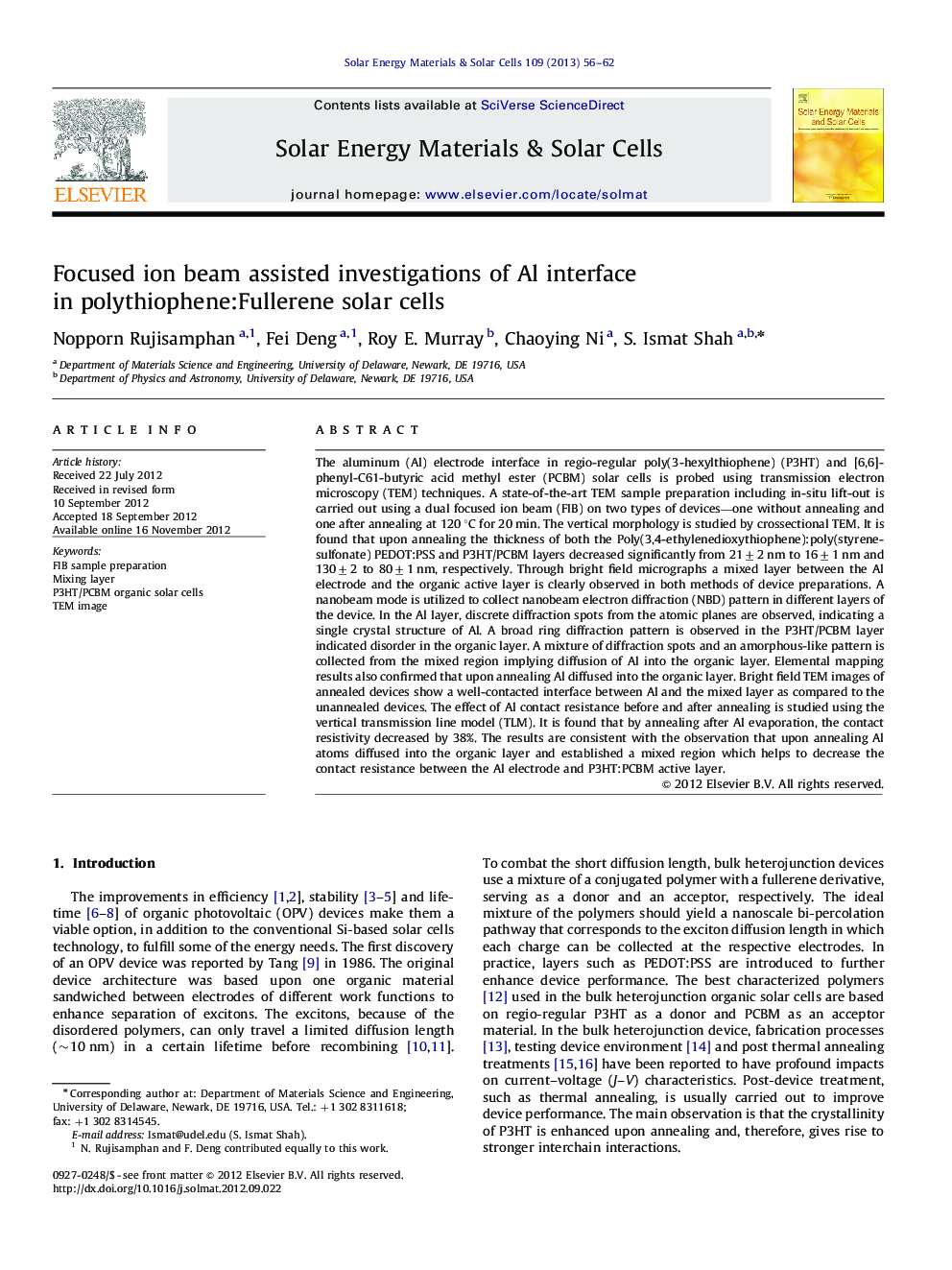| کد مقاله | کد نشریه | سال انتشار | مقاله انگلیسی | نسخه تمام متن |
|---|---|---|---|---|
| 78414 | 49331 | 2013 | 7 صفحه PDF | دانلود رایگان |

The aluminum (Al) electrode interface in regio-regular poly(3-hexylthiophene) (P3HT) and [6,6]-phenyl-C61-butyric acid methyl ester (PCBM) solar cells is probed using transmission electron microscopy (TEM) techniques. A state-of-the-art TEM sample preparation including in-situ lift-out is carried out using a dual focused ion beam (FIB) on two types of devices—one without annealing and one after annealing at 120 °C for 20 min. The vertical morphology is studied by crossectional TEM. It is found that upon annealing the thickness of both the Poly(3,4-ethylenedioxythiophene):poly(styrenesulfonate) PEDOT:PSS and P3HT/PCBM layers decreased significantly from 21±2 nm to 16±1 nm and 130±2 to 80±1 nm, respectively. Through bright field micrographs a mixed layer between the Al electrode and the organic active layer is clearly observed in both methods of device preparations. A nanobeam mode is utilized to collect nanobeam electron diffraction (NBD) pattern in different layers of the device. In the Al layer, discrete diffraction spots from the atomic planes are observed, indicating a single crystal structure of Al. A broad ring diffraction pattern is observed in the P3HT/PCBM layer indicated disorder in the organic layer. A mixture of diffraction spots and an amorphous-like pattern is collected from the mixed region implying diffusion of Al into the organic layer. Elemental mapping results also confirmed that upon annealing Al diffused into the organic layer. Bright field TEM images of annealed devices show a well-contacted interface between Al and the mixed layer as compared to the unannealed devices. The effect of Al contact resistance before and after annealing is studied using the vertical transmission line model (TLM). It is found that by annealing after Al evaporation, the contact resistivity decreased by 38%. The results are consistent with the observation that upon annealing Al atoms diffused into the organic layer and established a mixed region which helps to decrease the contact resistance between the Al electrode and P3HT:PCBM active layer.
Crosssectional high resolution TEM images of Al and P3HT/PCBM layers (a) as-prepared, and (b) annealed devices, showing a mixed layer (∼3 nm) between Al and P3HT/PCBM regions for both cases of device preparations (small triangles provide a guideline of the mixed layer). Insets show NBD patterns collected in nanobeam mode with the electron beam size 0.9 nm2.Figure optionsDownload as PowerPoint slideHighlights
► Crossection TEM samples were prepared in situ using focused ion beam technique.
► Interdiffusion of Al and S is observed in active polymer and Al contact layers.
► Extent of Al diffusion increases with annealing and reduces contact resistance.
► Vertical transmission line model explains the contact resistance change.
Journal: Solar Energy Materials and Solar Cells - Volume 109, February 2013, Pages 56–62